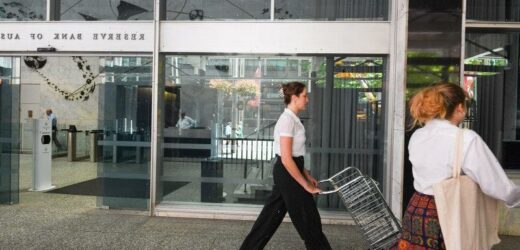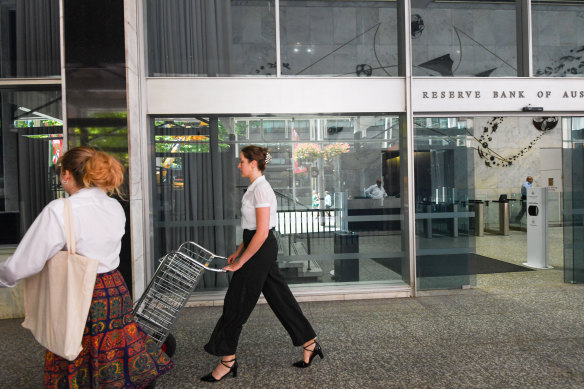Australia’s unemployment rate fell back to 3.5 per cent in February, official figures released today, clouding the Reserve Bank’s next move on interest rates.
The Australian Bureau of Statistics on Thursday reported the nation created 64,600 jobs during the month while the number of people out of work fell by 16,500. This meant the jobless rate, which lifted in January, fell 0.2 percentage points.
The Reserve Bank faces a tough decision at its next meeting after strong job figures for February.Credit:Peter Rae
Full-time employment increased by 74,900 to almost 9.7 million people while part-time employment edged down by 10,300.
Markets had been expecting a fall in unemployment but the low rate is an issue for the Reserve Bank.
Only days ago, markets and most economists believed the bank would lift the cash rate because of the strong jobs market, but this has changed because of the growing concerns about the global banking system. The collapse of the Silicon Valley Bank and concerns about Credit Suisse have weighed on interest rate expectations and share markets.
Markets now expect the bank to hold the official cash rate at 3.6 per cent when it next meets in April.
Apart from a fall in unemployment, there was a sharp increase in hours worked, which lifted by 3.9 per cent. The underemployment rate also fell.
Across the states and territories, the biggest change was in the ACT where the jobless rate fell by 0.5 percentage points to 2.9 per cent.
It was steady in NSW at 3.2 per cent, it fell by 0.3 percentage points in Victoria to 3.7 per cent, it was steady at 3.8 per cent in Queensland while it lifted by 0.2 percentage points in WA to 3.9 per cent.
The bureau’s head of labour statistics, Bjorn Jarvis, said the jobless rate was back to where it was in December.
“The February increase in employment follows consecutive falls in December and January. In January, this reflected a larger than usual number of people waiting to start a new job, the majority of whom returned to or commenced their jobs in February,” he said.
“This was particularly evident in the south-east of Australia, with larger than seasonal numbers of people entering into employment across NSW, Victoria and the ACT.”
The head of macroeconomic forecasting at BIS Oxford Economics, Sean Langcake, said the numbers confirmed the ongoing strength of the jobs market.
“The labour market continues to track in a very strong position, and is starting to generate faster wage growth,” he said.
“Labour cost pressures are still contained and the RBA is looking to ensure this remains the case. The unemployment rate is expected to drift upwards over 2023, in large part due to interest rate hikes cooling demand.”
Cut through the noise of federal politics with news, views and expert analysis from Jacqueline Maley. Subscribers can sign up to our weekly Inside Politics newsletter here.
Most Viewed in Politics
From our partners
Source: Read Full Article



